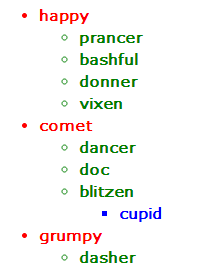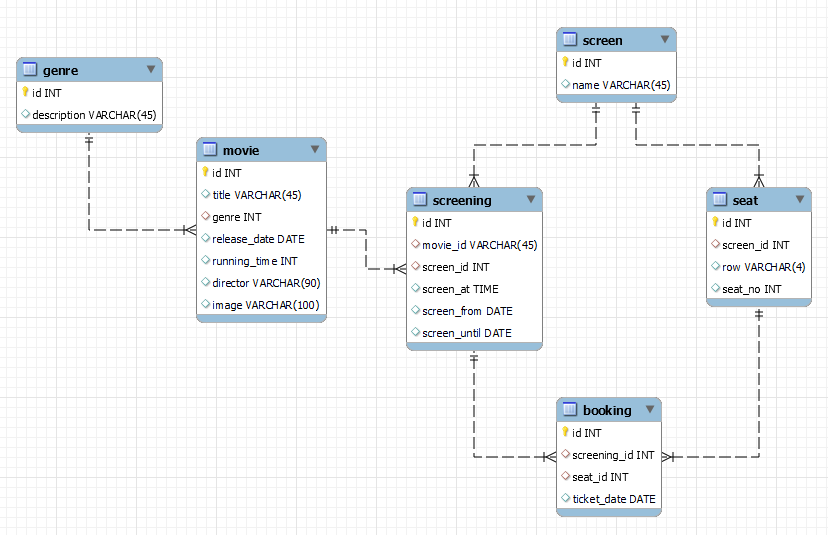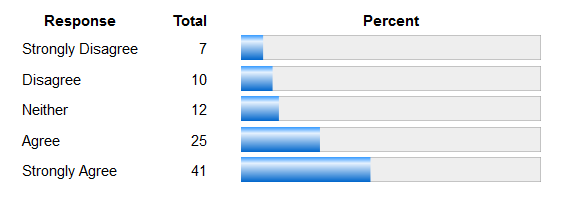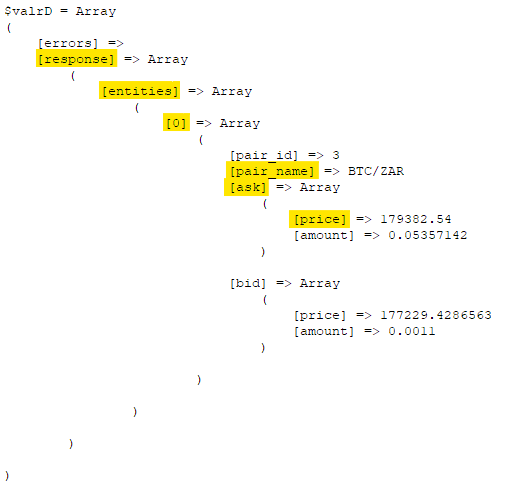Leaderboard
Popular Content
Showing content with the highest reputation since 04/05/2014 in all areas
-
Something like this? CODE <?php include 'db_inc.php'; // YOUR CONNECTION $pdo = pdoConnect('movies'); // CODE GOES HERE ################################################################################ ## PROCESS AJAX REQUESTS ################################################################################ if (isset($_GET['ajax'])) { $res = $pdo->prepare("SELECT m.id as movie_id , m.title , m.image , g.description as genre , CONCAT(m.running_time DIV 60, ' hrs ', m.running_time % 60, ' mins') as running_time , date_format(sg.screen_on, '%W, %D %b') as date , s.name as screen_num , TIME_FORMAT(sg.screen_at, '%H:%i') as start_time FROM screening sg JOIN screen s ON sg.screen_id = s.id JOIN movie m ON sg.movie_id = m.id JOIN genre g ON g.id = m.genre WHERE dayname(screen_on) = :day ORDER BY movie_id, screen_on, sg.screen_at "); $res->execute([ 'day' => $_GET['day'] ]); $data = []; # # Put data into an array with same structure a required output # - array of movies, each movie having arrays of screenings # foreach ($res as $r) { if (!isset($data[$r['movie_id']])) { $data[$r['movie_id']] = [ 'title' => $r['title'], 'image' => $r['image'], 'genre' => $r['genre'], 'runtime' => $r['running_time'], 'screenings' => [] ]; } $data[$r['movie_id']]['screenings'][$r['date']][] = ['start' => $r['start_time'], 'sno' => $r['screen_num'] ]; } exit(json_encode($data)); } ?> <!DOCTYPE html> <html lang="en"> <head> <meta name="generator" content="PhpED 12.0 (Build 12010, 64bit)"> <meta name="viewport" content="width=device-width, initial-scale=1.0"> <title>olumide</title> <link rel="stylesheet" href="https://www.w3schools.com/w3css/4/w3.css"> <link rel="stylesheet" href="https://cdnjs.cloudflare.com/ajax/libs/font-awesome/6.2.1/css/all.min.css"> <script src="https://code.jquery.com/jquery-3.6.0.min.js"></script> <script type='text/javascript'> function showScreenings(day) { $("#movie-listings").html("") $.get( "", {"ajax":1, "day":day}, function(resp) { $.each(resp, function(mid, mdata) { let title = `<h2>${mdata.title}</h2><h4 class='w3-text-gray'>${mdata.genre} (${mdata.runtime})</h4>` $("#movie-listings").append(title) $.each(mdata.screenings, function(dt, ddata) { let datesub = `<h3>${dt}</h3>` $("#movie-listings").append(datesub) $("#movie-listings").append("<div class='screenings'") $.each(ddata, function(k, sdata) { let scr = `<div class='screening'><b>${sdata.start}</b><br>${sdata.sno}</div>` $("#movie-listings").append(scr) }) $("#movie-listings").append("</div>") }) }) }, "JSON" ) } </script> <style type='text/css'> .days { padding: 16px; text-align: center; } .screening { width : 20%; display: inline-block; margin-right: 16px; margin-bottom: 8px; padding: 4px; border: 5px solid black; font-size: 9pt; } </style> </head> <body> <nav class="days"> <button onclick="showScreenings('Monday')">Monday</button> <button onclick="showScreenings('Tuesday')">Tuesday</button> <button onclick="showScreenings('Wednesday')">Wednesday</button> <button onclick="showScreenings('Thursday')">Thursday</button> <button onclick="showScreenings('Friday')">Friday</button> <button onclick="showScreenings('Saturday')">Saturday</button> <button onclick="showScreenings('Sunday')">Sunday</button> </nav> <div id='movie-listings'class='w3-content w3-padding w3-card-4'> <!-- LISTINGS GO HERE --> </div> </body> </html>3 points
-
I guess you don't understand that phpfreaks is a free site, with expert help provided by volunteers. Given the fact that everyone is donating their time and expertise to try and help people like yourself, the argument that you host a free site with source code you got from somewhere else for free, means you shouldn't ever have to learn anything (which can be learned in a few hours) will not get you much sympathy here.3 points
-
By far the best the best way is to fix whatever they are warning you about.3 points
-
@HawkeNN I want to clarify some things for you. Most code that was written for PHP 7.x will still run fine under php 8. For the most part PHP 8 added new features. There are "Breaking Changes" that were made, listed here: https://www.php.net/manual/en/migration80.incompatible.php but it is unlikely that is the problem with your code from some of the errors I saw listed. For example, the "headers already sent" error is a common one and has been around since php 3 at least. It has to do with code that sends output to the browser (as in the case of a script that intermixes HTML and php) and then tries to set HTTP header values. At that point, the HTTP request has already been sent with whatever headers it had, and it's too late to add or modify them. PHP session use is one function that sets header values because it sets a cookie. Some of the advice that you got is related to common techniques for trying to solve the issue. Equally important is your hosting configuration for PHP. Changes to the configuration of PHP from a version upgrade, can turn on settings that might have been off previously, or warnings being emitted that weren't before. This can then trigger output which also causes the "headers already sent" message. I suspect that this is part of your problem here, and really requires some debugging of your hosting setup. This was already brought up to you, in that there will be a php.ini (and often other assorted xyz.ini files that are included by the main php.ini) where settings can be made or changed to re-configure php. In conclusion, this is a PHP developer forum. From looking at this thread, you aren't likely to have a good outcome here, because you aren't a php developer. My sincere advice is to just find yourself a developer (this forum is chock full of them) you can pay a fee to, in order to resolve your issues and get your site working again. We have established that the code is bad, and that there is likely a few different things going on that are somewhere between the configuration of your server to possible improvements to the code you have. In other words, this is a problem for an experienced developer that requires debugging. I probably shouldn't say this, but my knee jerk reaction is that getting your code to work is not that big of a job, but looking at a thread like this is frustrating to read, because in my experience it is not going anywhere. There isn't any long term value to it for our forum, and you are not going to become an active member of the forum, nor learn PHP development, so there is nothing in it for us, or the community at large.3 points
-
With a couple of db tables like this Table: user Table: role +---------+----------+--------+ +---------+---------------+-----------+------------+ | user_id | username | points | | role_id | role_name | point_min | points_max | +---------+----------+--------+ +---------+---------------+-----------+------------+ | 1 | John | 66 | | 5 | - | 0 | 100 | | 2 | Paul | 101 | | 6 | Contributor | 101 | 1000 | | 3 | George | 3000 | | 7 | Author | 1001 | 10000 | | 4 | Ringo | 200000 | | 8 | Editor | 10001 | 100000 | +---------+----------+--------+ | 9 | Administrator | 100001 | 999999999 | +---------+---------------+-----------+------------+ Then a simple query SELECT username , rolename FROM user u JOIN role r ON u.points BETWEEN r.points_min AND r.points_max; does the job for you +----------+---------------+ | username | rolename | +----------+---------------+ | John | - | | Paul | Contributor | | George | Author | | Ringo | Administrator | +----------+---------------+3 points
-
Use DATE type columns for your dates, not varchar. Have your leaving dates either a valid date or NULL. SELECT eemp_id , fname , lname , AVG(timestampdiff(MONTH, joining_date, coalesce(leaving_date, curdate()))) as av_mths FROM employee_details ed JOIN employee e ON e.empid = ed.eemp_id GROUP BY eemp_id HAVING av_mths >= 36;3 points
-
If you are outputting an image from a DB blob field, then here's an example... // EMULATE DATA FROM THE DATABASE $type = 'image/png'; $comments = 'Lorem ipsum dolor sit amet, consectetuer adipiscing elit. Maecenas porttitor congue massa. Fusce posuere, magna sed pulvinar ultricies, purus lectus malesuada libero, sit amet commodo magna eros quis urna.'; $image_data = file_get_contents('images/snowman.PNG'); // OUTPUT THE DATA echo "<div style='width:396;'> <img src='data:{$type};base64," . base64_encode( $image_data ) . "' width='394' height='393'> <p>$comments</p> "; RESULT3 points
-
Don't use "SELECT * ". Specify the columns you want. This makes it easier for others, like me, to understand what is in the table and what the query is doing. Indent your code to show the nested structure of loops etc. If you had done those I might have given this problem more than a cursory glance. So you'll have to settle for a generic example of using a recursive function to give an indented list of parent/child elements. Also, Don't run queries inside loops. Use JOINs to get all the data in a single query THE DATA TABLE: category +----+---------+--------+ | id | name | parent | +----+---------+--------+ | 1 | happy | 0 | | 2 | comet | 0 | | 3 | grumpy | 0 | | 4 | prancer | 1 | | 5 | bashful | 1 | | 6 | dancer | 2 | | 7 | doc | 2 | | 8 | blitzen | 2 | | 9 | dasher | 3 | | 10 | donner | 1 | | 11 | vixen | 1 | | 12 | cupid | 8 | +----+---------+--------+ THE OUTPUT THE CODE <?php $sql = "SELECT id, name, parent FROM category"; $res = $db->query($sql); // // store arrays of items for each parent in an array // while (list($id, $name, $parent) = $res->fetch(PDO::FETCH_NUM)) { $data[$parent][] = array('id'=>$id, 'name'=>$name); } /** * recursive function to print a category then its child categories * * @param array $arr category data * @param int $parent parent category * @param int $level hierarchy level */ function displayHierarchy(&$arr, $parent, $level=0) { if (isset($arr[$parent])) { echo "<ul>\n"; foreach($arr[$parent] as $rec) { echo "<li class='li$level'>{$rec['name']}\n"; if (isset($arr[$rec['id']])) displayHierarchy($arr, $rec['id'], $level+1); echo "</li>\n"; } echo "</ul>\n"; } } ?> <!DOCTYPE html> <html> <head> <meta http-equiv="Content-Type" content="text/html; charset=utf-8"> <title>Example</title> <link rel="stylesheet" href="https://www.w3schools.com/w3css/4/w3.css"> <script src="https://ajax.googleapis.com/ajax/libs/jquery/3.3.1/jquery.min.js"></script> <script type="text/javascript"> </script> <style type="text/css"> body { font-family: verdana,sans-serif; font-size: 11pt; padding: 50px; } li { font-weight: 600;} .li0 { color: red; } .li1 { color: green; } .li2 { color: blue; } </style> </head> <body> <?php displayHierarchy($data, 0); ?> </body> </html>3 points
-
Too many people are obsessed with "filtering" bad inputs. You don't have to "filter" anything. You don't have to remove HTML tags. You don't have to remove SQL keywords. You don't have to strip quotes or backslashes. All you have to do is make sure that whatever the user typed doesn't screw around with what you're trying to do. Want to put it into HTML? Make sure it doesn't screw around with your HTML. Want to put it into SQL? Make sure it doesn't screw around with your SQL. Want to send it in JSON? Make sure it doesn't screw around with your JSON. And every single one of those situations has a simple, single best-practice solution: HTML? Use htmlspecialchars with ENT_QUOTES* and the correct charset. SQL? Use prepared statements. JSON? Use json_encode. That's it. No filter_vars or filter_inputs, no strip_tags, no regular expressions, nothing stupid like that. User wants to look cool and type <script> tags into their forum post? Go ahead and let them, because it'll just show up as plain and simple text. Like it just did now. * Only actually required if you are putting the input into an single quote-delimited tag attribute. Using double quotes for your attributes? Not outputting into an HTML tag? Then you don't technically need ENT_QUOTES.3 points
-
3 points
-
People still use StackOverflow? That's only half a joke. Their community has always been toxic to newcomers and there's so much emphasis on correctness that anything less than perfect is unacceptable. And there's the hostility towards any form of discussion about what is right that I always mention when this subject comes up. SO is good when you're looking for a precise answer to a specific question, but it's terrible for actually asking the questions, or trying to weigh in as a new person with different answers. But I am glad they dethroned Expert Sex Change in search results. edit: If Your Common Sense/shrapnelcol came across this thread and decided they wanted to join our forum...3 points
-
A few notes about text bounding boxes which, I hope, will help in precise placement of your text. Suppose I have the text string "The lazy fox" which I want to display using 150pt Vivaldi . My image is 4896 x 3672 and I want the text placed at the bottom right but 250 pixels from the edges of the image. $box = imagettfbbox(150,0,'c:/windows/fonts/vivaldii.ttf','The lazy fox'); gives this array of coordinates of the four corners $box = Array ( [0] => 23 [1] => 55 [2] => 871 [3] => 55 [4] => 871 [5] => -140 [6] => 23 [7] => -140 ) You may wonder why it can't just give a rectangle from (0,0) to (width, height) to make sizing simple, but there is extra information to be extracted from the array Text width = (871 - 23) = 848 Text height = 55 - (-140) = 195 The baseline will be 140px from the top The text is offset 23 px to the right. My text, therefore, will be in a rectangle 848 x 195 positioned 250 px from right and bottom edges. The top left x coord of the rectangle will be (4896 - 250 - 848) = 3798 and top left y coord will be (3672 - 250 - 195) = 3227. However, to land the text precisely into this area we position it on the baseline and at the required x offset, ie (3798 - 23 , 3227 + 140) = (3775, 3367). I use a simple custom function to assist with this process function metrics($font, $fsize, $str) { $box = imagettfbbox($fsize, 0, $font, $str); $ht = abs($box[5] - $box[1]); $wd = abs($box[4] - $box[0]); $base = -$box[5]; $tx = -$box[0]; return [ 'width' => $wd, 'height' => $ht, 'ascent' => $base, 'offsetx' => $tx ]; } $box = metrics ('c:/windows/fonts/vivaldii.ttf', 150, 'The lazy fox'); $box = Array ( [width] => 848 [height] => 195 [ascent] => 140 [offsetx] => -23 )3 points
-
Don't use $GLOBALS. Forget it exists. There is never a good reason to use it. Pretend you never saw it.3 points
-
+----------------+ +----------------+ | Make sure to |---+ +------->| (e.g. Courier) | +----------------+ | | +----------------+ | | | | +----------+ | | +->| use a |---+ | | +----------------+ +----------+ | | +------->| and use spaces | | | +----------------+ | +----------------+ | | +--->| monospace font |-----+ | +----------------+ | +----------+ | | not tabs |<----------+ +----------+ | +--------------------------------------------------------------------------+ | V +---------------+ | It also helps | +---------------+ | | | +-------------------+ +-------------------+ +------------------------>| if you sometimes |---------------------->| switch between | +-------------------+ +-------------------+ | | +-----------------+-----------------+ | | | | +-------------------+ +-------------------+ | overtype | | insert | +-------------------+ +-------------------+ | | | | | +----------+ | +----------=>| modes |<----------+ +----------+3 points
-
The code in each switch is identical so all it achieves is to ensure the calculation uses only the defined list of diameter options. Just use an array of the valid values to verify the values. You can use the same array to generate the option list <?php $diam_vals = [2,3,4,6,8,10,12,14,16,18,20,22,24,26]; $results = ''; if ($_SERVER['REQUEST_METHOD']=='POST') { $x = $_POST['x'] ?? 0; $y = $_POST['y'] ?? 0; $diametre = $_POST['diametre'] ?? 0; if ($x > 0 && $y > 0 && in_array($diametre, $diam_vals)) { $rayon = $diametre * 38.1; $dc = $x/2; $ad = ($y/2)-$rayon; $ac = sqrt(pow($ad,2) + pow($dc,2)); $ec = sqrt(pow($ac,2) - pow($rayon,2)); $LongueurBayonette = $ec*2; $alpha = asin($dc/$ac); $alpha = $alpha*180/M_PI; $beta = acos($rayon/$ac); $beta = $beta*180/M_PI; $angle = 180-$alpha-$beta; $results .= "X = " . $x . "mm" . "<br/>"; $results .= "Y = " . $y . "mm" . "<br/>"; $results .= "Longueur = " . number_format($LongueurBayonette,1) . " mm" . "<br/>"; $results .= "β = " . number_format($angle,1) . "°" . "<br/>"; $results .= "Rayon = " . $rayon . " mm" . "<br/>"; $results .= "φ = " . $diametre . '"' . "<br/>"; } else { $results = 'Inputs are not valid'; } } ?> <!DOCTYPE html> <html> <head> <meta http-equiv="Content-Type" content="text/html; charset=utf-8"> <title>Simplified Example</title> </head> <body> <form method="post" action=""> <fieldset> X: <input type="text" name="x" value="" /> <br/> Y: <input type="text" name="y" value="" /> <br/> Diametre: <select name="diametre"> <option value="0"> </option> <?php foreach ($diam_vals as $d) { echo "<option value='$d'>$d</option>\n" ; } ?> </select> <input type="submit" value = "Calculer" /> </fieldset> </form> <br> <?=$results?> Just curious - do you have a diagram of how those values relate to one another. It metions "rayon" and "bayonnette" so my guess is that it is some kind of laser rifle with attached bayonet (but I could be wrong) ?3 points
-
Try $expected = array( '1111', '2222', '2222', '3333' ); $received = array( '1111', '2222', '3333', '3333' ); $cExp = array_count_values($expected); $cRec = array_count_values($received); foreach (array_keys($cExp+$cRec) as $prod) { $e = $cExp[$prod] ?? 0; $r = $cRec[$prod] ?? 0; switch ($e <=>$r) { case -1: $check = 'Over'; break; case 0: $check = 'OK'; break; case 1: $check = 'Under'; break; } echo $prod . " Ordered: $e Received: $r - $check <br>"; } giving 1111 Ordered: 1 Received: 1 - OK 2222 Ordered: 2 Received: 1 - Under 3333 Ordered: 1 Received: 2 - Over2 points
-
don't bother with the mysqli extension. it is overly complicated, inconsistent, and in the case of procedural vs OOP statements, has different error responses for the same root problem. instead, use the much simpler, consistent, and more modern PDO extension. in php8+, both the mysqli and PDO extensions use exceptions for errors by default. the line of code that @Barand posted enables exceptions for errors for the msyqli extension. when you use exceptions for database statement errors, php will 'automatically' display or log the raw database errors, via an uncaught exception error. therefore, you can remove any existing error handling logic, since it won't ever get executed upon an error, simplifying the code. you should also name the connection variable as to the type of connection it contains, $mysqli/$pdo. this will let anyone looking at the code know what extension it is using, and also let you search for which code has been converted and which hasn't. you also need to use a prepared query when supplying external, unknown, dynamic values to a query when it gets executed, so that any sql special characters in a value cannot break the sql query syntax, which is how sql injection is accomplished. if you switch to the much simpler PDO extension, after you prepared the query, you can simply supply an array of the input values to the ->execute([...]) call.2 points
-
PHPFreaks has been going through some ownership and hosting changes, and that has lead to some extended down time. The hosting for the site has been generously provided by a number of different people and organizations throughout the years, and without their patronage, phpfreaks would have shutdown many years ago. With that said, please understand that the volunteers who administer and moderate the site don't have control over the underlying infrastructure, other than what is provided to us. In this recent outage the new owner of the site, who supported it in the years following the sale of the original hosting company where phpfreaks was created, has provided us a lot of support and aid, and demonstrated a commitment to keep the site running for the foreseeable future. Unfortunately, with that said, there will probably be some additional outages in the near future as the server resources that run the site are being moved to a different co-location facility. Please bear with us through these difficulties, as we endeavor to keep the community alive and available for everyone who finds it useful. We will continue to keep doing the work to keep phpfreaks running, and we appreciate the many long time members who have made it their home.2 points
-
try $res = $pdo->query("SELECT storeid , description FROM merge ORDER BY storeid "); foreach ($res as $r) { $data[$r['storeid']][] = $r['description']; } echo "<table>\n"; foreach ($data as $store =>$prods) { echo "<tr style='vertical-align: top;'><td>$store</td><td>" . join('<br>', $prods) . "</td></tr>\n"; } echo "</table>\n";2 points
-
2 points
-
do not store any user information in cookies. anyone can set cookies to any value and can impersonate a user. to do what you are asking, generate a unique token, store the token in a cookie and store it in a row in a 'remember me' database table, along with the user's id and things like when the remember me was set and when you want it to expire if not regenerated. if you receive a cookie containing a token, query to get the user's id and the expire datetime to determine if the token is valid. if it is, set the normal session user_id variable to indicate who the logged in user is. you should only store the user id in a session variable, then query on each page request to get any other user information, such as the username, permissions,... this will insure that an change/edit in this user information will take effect on the very next page request.2 points
-
OK - I've added the sort usort($test, fn($a, $b) => $b['itemCount']<=>$a['itemCount']); // sort descending itemCount $seen = []; foreach ($test as $k => &$rec) { $rec['rolanID'] = array_diff($rec['rolanID'], $seen); // find new ids if ($rec['rolanID']) { // if there are some new ones ... $rec['itemCount'] = count($rec['rolanID']); // count them $seen = array_merge($seen, $rec['rolanID']); // add the new ones to those already seen } else unset($test[$k]); // if no ids, remove the array item } and I now get this (no duplicate 123)... Array ( [0] => Array ( [supplier] => TEST2 DEPO [rolanID] => Array ( [0] => 456 [1] => 188 [2] => 200 [3] => 123 ) [itemCount] => 4 ) [1] => Array ( [supplier] => TEST DEPO [rolanID] => Array ( [1] => 234 ) [itemCount] => 1 ) [2] => Array ( [supplier] => DIFFERENT DEPO [rolanID] => Array ( [0] => 897 [1] => 487 [2] => 100 ) [itemCount] => 3 ) )2 points
-
or... $res = $pdo->query("SELECT `option`, total FROM vote"); $data = $res->fetchAll(); $votes_cast = array_sum( array_column($data, 'total') ); foreach ($data as $r) { printf ("%s has %d votes (%0.1f %%)<br>", $r['option'], $r['total'], $r['total']*100/$votes_cast); }2 points
-
Depending on what it is you're trying to do with the data, there are several ways to change a field. You can set up an accessor or mutator or use a query scope, for instance. Query scope sounds like what you're looking for, although should worse comes to worst you could just write a trait and use it on your model instances where needed.2 points
-
For anyone following... I did a screen-share with the OP. The problem was missing files and files in the wrong place. I did a clean install of Laragon and installed (Not upgraded) Mysql 8. All is working.2 points
-
2 points
-
Create an array of those field names which are to be read only, for example $readonly = ['id', 'username', 'email']; then $ro = (in_array($key, $readonly)) ? 'readonly' : '';2 points
-
Probably not what you really want, but it is what you asked for: $midPt = floor(strlen($content)/2); $file["content"] = substr($content, 0, $midPt) . $context['user']['id'] . substr($content, $midPt);2 points
-
It's the antithesis of progress and learning. We can only tell him stuff that he already knows, which is pointless. If he doesn't know it he won't use it. Therefore, whatever we tell him is a waste of time.2 points
-
This fails $j = "{'admin': 1, 'moderator': 1}" ; $a = json_decode($j, 1); echo '<pre> a ' . print_r($a, 1) . '</pre>'; This works $j = '{"admin": 1, "moderator": 1}' ; $b = json_decode($j, 1); echo '<pre> b ' . print_r($b, 1) . '</pre>'; Note the quotes in the JSON string.2 points
-
If you want to use silly names like that with the "." at the end then you need the column name inside backticks. SELECT `KNr.` FROM .... From MySQL manual2 points
-
You've fixed things but you haven't fixed things. Like these: if(isset($_POST['d_name'])){ } if(isset($_POST['manner_death'])){ } if(isset($_POST['place_death'])){ } if(isset($_POST['nok'])){ } if(isset($_POST['rel_nok'])){ } if(isset($_POST['morgue_att'])){ } What are those doing? Nothing. They don't do anything. Then you have if(isset($_POST['tag_num'])){ if(isset($_POST['treatment'])) The first line makes sense, but the second? Without a pair of { } then it will only run the very first line of code that comes after: the assignment for $d_name. Then in your query, $query = "insert into data ( d_name, manner_death, place_death ,nok, rel_nok, morgue_att, tag_num, treatment) values ( '$d_name'.'$manner_death','$place_death','$nok','$rel_nok','$morgue_att','$tag_num','$treatment')"; you managed to fix the one syntax error but you created a new one. You cannot create websites by putting code in your editor and hoping everything will work. You have to make actual, conscious, deliberate decisions about the code. You have to know what different pieces of code mean. You have to understand why code is what it is and then how you can use it to accomplish what you want. So before you try to write more code, stop and take a few days to learn what you can about PHP. Then come back to this file and put some thought into each line of code in it.2 points
-
In case anyone comes here and wants to know what the answer was, since that wasn't shared, Problem 1 - phpunit/phpunit[9.3.3, ..., 9.5.x-dev] require ext-dom * -> it is missing from your system. Install or enable PHP's dom extension. - Root composer.json requires phpunit/phpunit ^9.3.3 -> satisfiable by phpunit/phpunit[9.3.3, ..., 9.5.x-dev]. phpunit requires ext-dom (aka the DOM extension) but apparently it's missing. Install it.2 points
-
If you want it in a single query, initialize the variables in a joined subquery SELECT , (@csumA := @csumA + A) as cumulative_A , (@csumM := @csumM + M) as cumulative_M , (@csumE := @csumE + E) as cumulative_E , (@csumW := @csumW + W) as cumulative_W FROM ( SELECT WEEK(s.date) week, SUM(CASE WHEN s.user_id = 50 THEN s.points ELSE 0 END) AS A, SUM(CASE WHEN s.user_id = 51 THEN s.points ELSE 0 END) AS M, SUM(CASE WHEN s.user_id = 52 THEN s.points ELSE 0 END) AS E, SUM(CASE WHEN s.user_id = 53 THEN s.points ELSE 0 END) AS W FROM users u JOIN scores s ON u.user_id = s.user_id JOIN league l ON l.league_id = s.league_id AND and l.league_name = 'Sunday League' WHERE year(s.date) = YEAR(sysdate()) GROUP BY s.date ORDER BY s.date ASC ) PTS JOIN ( SELECT @csumA:=0, @csumM:=0, @csumE := 0, @csumW:=0 ) INIT;2 points
-
TIP: If you are creating home-grown charts, plotting the values is the easy bit. 95% of the coding effort will be in the drawing of chart area, plot area, axes, axis labels, scaling, titles etc. You can sidestep this with a simple table with horizontal bars. EG CODE EXAMPLE... <?php $values = [ 'Strongly Disagree' => 7, 'Disagree' => 10, 'Neither' => 12, 'Agree' => 25, 'Strongly Agree' => 41 ]; function valueChart(&$values) { $out = "<table class='chartTable'> <tr><th>Response</th> <th>Total</th> <th>Percent</th> </tr> "; $totalVal = array_sum($values); foreach ($values as $resp => $n) { $out .= "<tr><td>$resp</td> <td class='ra'>$n</td> <td>" . bar($n / $totalVal * 100) . "</td></tr>\n"; } $out .= "</table\n"; return $out; } function bar($val=0) { $a = '#3399ff'; $b = '#e6f2ff'; $c = '#0066cc'; $bg = '#eee'; $width = 300; $height = 25; $svg = <<<SVG <svg width='$width' height='$height' viewBox='0 0 $width $height'>"; <defs> <linearGradient id="bargrad" x1="0" y1="0" x2="0" y2="1"> <stop offset="0%" style="stop-color:$a"/> <stop offset="25%" style="stop-color:$b"/> <stop offset="100%" style="stop-color:$c"/> </linearGradient> </defs> <rect x='0' y='0' width='$width' height='$height' style='fill:$bg' stroke='#999'/> SVG; $w = $val/100 * $width; $svg .= "<rect x='0' y='0' width='$w' height='$height' style='fill:url(#bargrad)' />"; $svg .= "</svg>\n"; return $svg; } ?> <!DOCTYPE html> <html lang="en"> <meta http-equiv="Content-Type" content="text/html; charset=utf-8"> <title>Chart Example</title> <head> <style type='text/css'> .chartTable { font-family: arial, sans-serif; font-size: 11pt; } th { padding: 4px 16px ; } td { padding: 0 16px; } .ra { text-align: right; } </style> </head> <body> <?=valueChart($values)?> </body> </html> Hope this helps.2 points
-
That's why I laid it out the way I did with the comments - so it would be easy for you get the separate feet/inches values if you still wanted to go that way. [edit] Look more closely at my code - you require two substring_index()s to extract the inches. The inner to get the string before the final " and the outer one to get the string after the ' SET feet = substring_index(@height, '\'', 1) * 12 , inches = substring_index(substring_index(@height, '"', 1), '\'', -1)2 points
-
OK, I loaded your data into a test table INSERT INTO ajoo_login (datein, dateout) VALUES ('2019-03-30 17:05:24', '2019-03-30 17:09:47'), ('2019-04-01 15:13:32', '2019-04-01 15:19:46'), ('2019-04-04 23:37:21', '2019-04-04 23:50:51'), ('2019-04-18 15:28:35', '2019-04-18 15:33:10'), ('2019-04-23 16:35:20', '2019-04-23 16:42:35'), ('2019-04-24 12:03:07', '2019-04-24 12:10:28'), ('2019-05-01 08:05:48', '2019-05-01 08:20:28'), ('2019-05-08 18:04:04', '2019-05-08 18:14:57'), ('2019-05-09 08:18:15', '2019-05-09 08:29:38'), ('2019-06-18 12:49:01', '2019-06-18 13:10:15'), ('2019-09-05 17:17:33', '2019-09-13 15:24:28'), ('2019-09-28 07:05:03', '2019-09-28 08:12:26'), ('2019-09-28 12:55:56', '2019-09-28 13:21:15'), ('2019-09-28 16:47:52', '2019-10-01 16:28:18'), ('2019-10-03 13:11:44', '2019-12-10 17:56:25'), ('2020-05-22 12:08:32', '2020-08-27 17:21:02'); Running the query gives SELECT SUM(diff) AS tot_absent FROM ( SELECT CASE WHEN DATE(datein) > DATE(@prevout) THEN DATEDIFF(datein, @prevout) - 1 ELSE 0 END AS diff , datein , @prevout := dateout AS dateout -- store dateout in @prevout FROM ajoo_login JOIN (SELECT @prevout := NULL) init -- initialize @prevout ) logins; +------------+ | tot_absent | +------------+ | 327 | +------------+ Running just the subquery portion gives mysql> SELECT -> CASE WHEN DATE(datein) > DATE(@prevout) -> THEN DATEDIFF(datein, @prevout) - 1 -> ELSE 0 -> END AS diff -> , datein -> , @prevout := dateout AS dateout -> FROM ajoo_login -> JOIN (SELECT @prevout := NULL) init; +------+---------------------+---------------------+ | diff | datein | dateout | +------+---------------------+---------------------+ | 0 | 2019-03-30 17:05:24 | 2019-03-30 17:09:47 | | 1 | 2019-04-01 15:13:32 | 2019-04-01 15:19:46 | | 2 | 2019-04-04 23:37:21 | 2019-04-04 23:50:51 | | 13 | 2019-04-18 15:28:35 | 2019-04-18 15:33:10 | | 4 | 2019-04-23 16:35:20 | 2019-04-23 16:42:35 | | 0 | 2019-04-24 12:03:07 | 2019-04-24 12:10:28 | | 6 | 2019-05-01 08:05:48 | 2019-05-01 08:20:28 | | 6 | 2019-05-08 18:04:04 | 2019-05-08 18:14:57 | | 0 | 2019-05-09 08:18:15 | 2019-05-09 08:29:38 | | 39 | 2019-06-18 12:49:01 | 2019-06-18 13:10:15 | | 78 | 2019-09-05 17:17:33 | 2019-09-13 15:24:28 | | 14 | 2019-09-28 07:05:03 | 2019-09-28 08:12:26 | | 0 | 2019-09-28 12:55:56 | 2019-09-28 13:21:15 | | 0 | 2019-09-28 16:47:52 | 2019-10-01 16:28:18 | | 1 | 2019-10-03 13:11:44 | 2019-12-10 17:56:25 | | 163 | 2020-05-22 12:08:32 | 2020-08-27 17:21:02 | +------+---------------------+---------------------+2 points
-
NOTE: both instances of $db->query(..) in the above post should be $db->prepare(..)2 points
-
However, using the string just as far as the the first entity $valrD = json_decode(valrGet, true); echo '<pre>$valrD = ', print_r($valrD, 1), '</pre>'; gives therefore $target = 'BTC/ZAR'; foreach ($valrD['response']['entities'] as $k => $ents) { if ($ents['pair_name'] == $target) { echo "$target asking price : {$ents['ask']['price']}<br>"; break; } } outputs "BTC/ZAR asking price : 179382.54"2 points
-
1 and 2 would presumably be input from the web page. The rest would be something like: for ($m=1; $m<=$M; $m++) { for ($l=1; $l<=$L; $l++) { for ($j=1; $j<=$N; $j++) { #do calculation here storing it in a 2D array } # select minimum here (perhaps min() function) } } # use array sort # use PHP vector class # compute distance from vectors # echo results in desired format2 points
-
You are missing the step to prepare the query before binding the parameters. I would strongly advise you use PDO rather than mysqli - much simpler.2 points
-
I created an extra table to define which category the values were in mysql> select * from catval; +-----+------+ | val | cat | +-----+------+ | 1 | 4 | | 2 | 4 | | 3 | 4 | | 4 | 4 | | 5 | 3 | | 6 | 3 | | 7 | 2 | | 8 | 2 | | 9 | 1 | | 10 | 1 | +-----+------+ then $sql = "SELECT a.cat as cata , b.cat as catb FROM datatb d JOIN catval a ON d.grpa = a.val JOIN catval b ON d.grpb = b.val "; $result = $db->query($sql); //categories $cat = [ 4 => ['name'=>'1:4', 'recs'=>[]], 3 => ['name'=>'5:6', 'recs'=>[]], 2 => ['name'=>'7:8', 'recs'=>[]], 1 => ['name'=>'9:10','recs'=>[]] ]; $n = 0; while ($row = $result->fetch_assoc()) { $cat[$row['cata']]['recs'][$n][] = $row['cata']; $cat[$row['catb']]['recs'][$n][] = $row['catb']; $n++; } // the output echo "<table border='1' style='width:500px; border-collapse:collapse;'>"; foreach ($cat as $c) { echo "<tr><th>{$c['name']}</th>"; for ($i=0; $i<$n; $i++) { echo '<td style="text-align:center;">' . (isset($c['recs'][$i]) ? join(',', $c['recs'][$i]) : '–') . "</td>"; } echo "</tr>\n"; } echo "</table>\n";2 points
-
$q = 'SELECT ID FROM table'; That is a SQL query. You have to run that query through your database, receive the results, and then look for each single matching image in the directory for every returned record. You can probably skip looking in the directory, though. It will only tell you if the file exists. So if you already know (or assume) the file exists then you don't need to bother looking.2 points
-
Don't worry about the IBD file. MySQL knows how to manage itself, you don't need to go second guessing it because of what you think you saw in Notepad. The question you think you're asking is whether to use an UPDATE or a DELETE+INSERT, but the question you're actually asking is how you should manage uploaded files that can be replaced. The answer to that is... well, it depends. There are two basic options: 1. Forget the previously uploaded file. You don't care about it. Take the new file and stick it wherever you want, update the database, and delete the old file. Gotta delete. Because if you forget about the old file then there's not much of a point to keeping the file itself around too. 2. Keep track of the previous file. You'd probably want a table that holds all the information for past and future uploads, and that's where you track them. For using those files, instead of storing the file information in whatever place, you reference the file in your upload information table. New image, new information row, and you update whatever place was affected. This lets you keep a history of everything, which probably isn't important for stuff like user avatars but is frighteningly important for stuff like monetary transactions. "Okay, I've decided that I want to do <whichever option>. But what about my literal question? Should I update or delete and insert?" Time to learn about an important concept in computing that disappointingly few programmers ever end up learning: atomicity. That's the noun version of "atomic", which means (in this case) that whatever operation you need to do can't be interrupted or broken in half or appear to anyone else as being anything less than one single action. Atomicity is important for stuff like files and databases because you basically never want to look at a file or data in the middle of some important operation. Imagine your site is popular. Really popular. Facebook or Twitter popular. Constant traffic to your servers. Now imagine a user uploads a new image. When the code is ready, it needs to go off into the database to make whatever changes it needs to make so the user has the new image. Say you go with DELETE and INSERT. Your code runs one query that DELETEs whatever, then another query that INSERTs. Sounds fine. Except remember how your site is always busy? It's quite possible someone was looking at your site at the moment in between those two queries. Since the DELETE has happened but not yet the INSERT, your code isn't going to find whatever data it needed to find and the user is going to get a bad experience. If that user was a CEO for a huge company that wanted to buy you out for lots of money, they might not do that now. A DELETE and INSERT is not atomic because there was that point in between the two queries. It was not "one single action". Instead you go with UPDATE. The database does whatever it does, but the clever people who wrote the software for it already knew about stuff like atomicity. And they made their system guarantee that UPDATEs are atomic. One single action. If you do an UPDATE when that rich CEO looks at your site, the database has guaranteed to you that either (a) the CEO will see the old data because the update hasn't happened yet, or (b) they'll see the new data because the update has happened. There is no moment in between old and new for stuff to be broken.2 points
-
An alternative to the 2-table option is to treat costs as transactions, just like payments (cost amounts +ve, payment amounts -ve in this example)... DATA TABLE: payment +------+------+------------+--------------+---------+ | uid | name | trans_date | payment_type | payment | +------+------+------------+--------------+---------+ | 1 | kim | 2020-03-01 | cost | 100 | | 1 | kim | 2020-03-02 | card | -100 | | 2 | lee | 2020-03-01 | cost | 95 | | 2 | lee | 2020-03-02 | cash | -95 | | 3 | kent | 2020-03-01 | cost | 100 | | 3 | kent | 2020-03-03 | cash | -50 | | 3 | kent | 2020-03-04 | card | -50 | | 4 | iya | 2020-03-01 | cost | 80 | | 4 | iya | 2020-03-05 | cash | -40 | | 4 | iya | 2020-03-06 | card | -20 | +------+------+------------+--------------+---------+ then SELECT uid , name , date , cost , cash , card , total as balance FROM ( SELECT name , DATE_FORMAT(trans_date, '%b %D') as date , CASE payment_type WHEN 'cash' THEN -payment ELSE '-' END as cash , CASE payment_type WHEN 'card' THEN -payment ELSE '-' END as card , CASE payment_type WHEN 'cost' THEN payment ELSE '-' END as cost , @tot := CASE @previd WHEN uid THEN @tot+payment ELSE payment END as total , @previd := uid as uid FROM ( SELECT * FROM payment ORDER BY uid, trans_date ) sorted JOIN (SELECT @previd:=0, @tot:=0) initialize ) recs; +------+------+---------+------+------+------+---------+ | uid | name | date | cost | cash | card | balance | +------+------+---------+------+------+------+---------+ | 1 | kim | Mar 1st | 100 | - | - | 100 | | 1 | kim | Mar 2nd | - | - | 100 | 0 | | 2 | lee | Mar 1st | 95 | - | - | 95 | | 2 | lee | Mar 2nd | - | 95 | - | 0 | | 3 | kent | Mar 1st | 100 | - | - | 100 | | 3 | kent | Mar 3rd | - | 50 | - | 50 | | 3 | kent | Mar 4th | - | - | 50 | 0 | | 4 | iya | Mar 1st | 80 | - | - | 80 | | 4 | iya | Mar 5th | - | 40 | - | 40 | | 4 | iya | Mar 6th | - | - | 20 | 20 | +------+------+---------+------+------+------+---------+2 points
-
Not sure I would call a registration and login system less complex than threads and posts, but I guess it depends... I suggest you take a look at MariaDB's knowledge base section on database theory.2 points
-
Alternative model which allows multiple siblings jdev_nroll; jdev_sibling; +----+--------+---------+-------+-----------+------------+ +------------+----------+ | id | sname | ctclass | shift | ctstudent | dob | | sibling_id | elder_id | +----+--------+---------+-------+-----------+------------+ +------------+----------+ | 1 | Curly | 1 | 0 | N | 2007-01-20 | | 2 | 1 | | 2 | Larry | 1 | 0 | Y | 2010-12-21 | | 3 | 1 | | 3 | Mo | 1 | 0 | Y | 2011-02-22 | | 3 | 2 | | 4 | Peter | 1 | 0 | N | 2009-01-03 | | 4 | 5 | | 5 | Paul | 1 | 0 | N | 2006-12-21 | | 9 | 8 | | 6 | Mary | 1 | 0 | Y | 2010-09-20 | | 9 | 10 | | 7 | Jane | 1 | 0 | N | 2008-03-08 | | 10 | 8 | | 8 | John | 1 | 0 | N | 2006-10-04 | +------------+----------+ | 9 | George | 1 | 0 | Y | 2010-10-26 | | 10 | Ringo | 1 | 0 | Y | 2009-11-15 | +----+--------+---------+-------+-----------+------------+ SELECT a.id as sibling_id , a.sname as sibling_name , TIMESTAMPDIFF(YEAR,a.dob,curdate()) as sibling_age , a.ctclass as class , b.id as elder_id , b.sname as elder_name , TIMESTAMPDIFF(YEAR,b.dob,curdate()) as elder_age , b.ctstudent as elder_ctstudent FROM jdev_nroll a JOIN jdev_sibling s ON a.id = s.sibling_id JOIN jdev_nroll b ON s.elder_id = b.id WHERE a.ctstudent = 'Y' ORDER BY a.id +------------+--------------+-------------+-------+----------+------------+-----------+-----------------+ | sibling_id | sibling_name | sibling_age | class | elder_id | elder_name | elder_age | elder_ctstudent | +------------+--------------+-------------+-------+----------+------------+-----------+-----------------+ | 2 | Larry | 9 | 1 | 1 | Curly | 13 | N | | 3 | Mo | 8 | 1 | 1 | Curly | 13 | N | | 3 | Mo | 8 | 1 | 2 | Larry | 9 | Y | | 9 | George | 9 | 1 | 8 | John | 13 | N | | 9 | George | 9 | 1 | 10 | Ringo | 10 | Y | | 10 | Ringo | 10 | 1 | 8 | John | 13 | N | +------------+--------------+-------------+-------+----------+------------+-----------+-----------------+2 points
-
Yes but you don't want to run both at the same time. If you really wanted to, you would need to change the Apache port on one of them as they both use port 802 points
-
the path being used in the opendir() statement either has a hard-coded '/home/sites/' in it or is using a variable that has that incorrect value in it. based on the path where the code is actually at, that part of the path should be - /home/customer/www/2 points
This leaderboard is set to New York/GMT-04:00


















